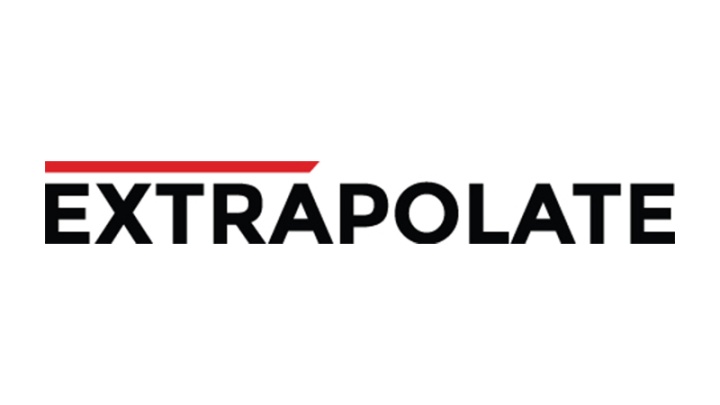A new market analysis underscores the significant and growing importance of the global Green Cement Market. Valued at USD 29.73 billion in 2023 and projected to reach USD 57.24 billion by 2031, the market is set to expand at a robust Compound Annual Growth Rate (CAGR) of 8.65% during the forecast period. This substantial growth is primarily driven by increasing environmental regulations, growing awareness of carbon emissions from the construction industry, the rising demand for sustainable infrastructure, and continuous innovations in low-carbon cement production technologies.
Read Complete Report Details: https://www.kingsresearch.com/green-cement-market-598
Report Highlights
The comprehensive report analyzes the global Green Cement Market, segmenting it by Product Type (Fly-Ash based, Slag-based, Limestone-based, Recycled Aggregates, Silica Fume-based, Others), by Application (Residential, Commercial, Industrial, Infrastructure), and Regional Analysis. The report includes key players such as Buzzi Unicem S.r.l., CarbonCure Technologies Inc., Cemex, S.A.B. de C.V., Comdex Enterprises, LLC, CRH plc, Heidelberg Materials AG, HOLCIM, SCG, TAIHEIYO CEMENT CORPORATION, UltraTech Cement Ltd., and others. This detailed segmentation and company analysis provide valuable insights into the market's dynamics and emerging trends.
Key Market Drivers
- Stringent Environmental Regulations and Carbon Emission Reduction Targets: Governments and regulatory bodies worldwide are implementing stricter policies to curb carbon emissions from industrial sectors, particularly construction. The cement industry is a significant contributor to global CO2 emissions, driving the adoption of green cement as a lower-carbon alternative to comply with these regulations and achieve sustainability targets.
- Growing Awareness of Sustainability in Construction: Increased environmental consciousness among builders, architects, and end-users is fostering a preference for eco-friendly building materials. Green cement, with its reduced environmental footprint, aligns with the principles of green building certifications (like LEED) and sustainable construction practices.
- Rising Demand for Sustainable Infrastructure Development: As urbanization accelerates, especially in emerging economies, there's a burgeoning need for new infrastructure projects. Governments and public-private partnerships are increasingly prioritizing sustainable construction methods, including the use of green cement, for roads, bridges, and public buildings.
- Innovations in Raw Materials and Manufacturing Processes: Continuous research and development are leading to new methods of producing cement with reduced clinker content and increased use of industrial by-products. This includes utilizing materials like fly ash, blast furnace slag, and other supplementary cementitious materials (SCMs), as well as developing novel binding materials that significantly lower CO2 emissions.
- Economic Benefits and Enhanced Performance: While green cement sometimes carries a higher initial cost, its long-term benefits, such as enhanced durability, crack resistance, and reduced lifetime maintenance costs, are becoming more apparent. Furthermore, some green cement types can offer improved mechanical strength and tensile strength.
- Corporate Sustainability Initiatives: Major construction companies and cement manufacturers are proactively setting ambitious decarbonization targets and investing in green cement production to enhance their brand image, meet stakeholder expectations, and contribute to a circular economy.
Key Market Trends
- Fly-Ash Based Cement to Remain Dominant: "Fly-Ash based" green cement is expected to maintain its leading position in the market. Fly ash, a by-product of coal combustion, serves as an effective SCM, reducing the clinker content (and thus CO2 emissions) in cement while often enhancing its performance properties.
- Slag-Based Cement Gaining Traction: "Slag-based" cement, particularly using Ground Granulated Blast Furnace Slag (GGBFS) from the steel industry, is another significant segment. It offers substantial CO2 reductions and is widely used for its durability and resistance properties.
- Residential and Infrastructure Applications Driving Demand: The "Residential" application segment holds a considerable share, driven by increasing consumer preference for sustainable homes and green certifications. The "Infrastructure" segment is also a major growth driver, with governments and private entities investing in large-scale sustainable construction projects. The "Commercial" segment is expected to show the fastest CAGR.
- Increased Focus on Carbon Capture, Utilization, and Storage (CCUS): A significant trend in the industry is the integration of CCUS technologies into cement manufacturing. Companies like Heidelberg Materials and CarbonCure Technologies are pioneering projects that capture CO2 emissions directly from cement plants and often utilize them in concrete production, thereby "mineralizing" the carbon permanently.
- Development of Novel and Alternative Binders: Research is intensely focused on developing entirely new types of low-carbon binders that can significantly reduce or even eliminate the need for conventional clinker. Examples include calcium sulfoaluminate (CSA) cements, geopolymer cements, and bio-based cements.
- Circular Economy Principles: The green cement market is increasingly embracing circular economy principles, focusing on the reuse of industrial by-products (e.g., fly ash, slag, recycled aggregates) as raw materials and the development of cement types that can be recycled at the end of a building's life.
- Digitalization and AI in Manufacturing: Integration of digital technologies like Artificial Intelligence (AI) and advanced analytics in cement manufacturing is optimizing energy consumption, enhancing process efficiency, and further reducing the carbon footprint of green cement production.
- Carbon Labeling and Transparency: There's a growing trend towards carbon labeling of building materials, providing architects and builders with clear environmental impact data, which helps in making informed, sustainable choices. Companies are also providing Environmental Product Declarations (EPDs).
- Strategic Collaborations and Partnerships: Cement manufacturers are forming partnerships with technology providers, waste management companies, and research institutions to innovate, scale production, and expand the market for green cement solutions.
- North America and Asia-Pacific Leading Market Growth: North America is a significant market, driven by stringent environmental regulations and a strong emphasis on green building. Asia-Pacific is projected to be the fastest-growing region, fueled by rapid urbanization, massive infrastructure development, and increasing environmental awareness and government initiatives in countries like China and India.
Key Players in the Global Green Cement Market:
The global Green Cement Market is characterized by active participation from leading cement manufacturers and innovative technology companies. Prominent players include:
- Buzzi Unicem S.r.l.: Offers the CGreen product line, a family of products with reduced environmental impact, aimed at contributing to decarbonization by reducing their carbon footprint.
- CarbonCure Technologies Inc.: A leader in carbon utilization technology, deploying solutions that enable concrete producers to inject captured CO2 into concrete, permanently mineralizing it and reducing cement content. Recently announced leadership transition and collaboration in Saudi Arabia for NEOM development.
- Cemex, S.A.B. de C.V.: Actively engaged in decarbonization through its "Future in Action" program. Their Vertua products (low-carbon cement and concrete) accounted for a significant portion of total sales in 2024, exceeding their 2025 sales goal. They also received an EU Innovation Fund grant for CO2 capture.
- Comdex Enterprises, LLC
- CRH plc: Focuses on leading the transition to smarter, more sustainable construction by developing low-carbon materials and solutions. They are investing in technologies like recycling and alternative fuels to reduce the carbon footprint of essential materials.
- Heidelberg Materials AG: A pioneer in carbon capture and storage (CCS), aiming for the world's first carbon-captured net-zero cement. They offer various alternatives to traditional cement with reduced environmental impacts, including composite cements and innovative binding materials like Ternocem®.
- HOLCIM: A global leader in sustainable construction solutions, offering low-carbon cement brands like ECOPlanet (which delivers 100% performance with at least 30% lower CO2 emissions) and low-carbon concrete like ECOPact, incorporating recycled aggregates and alternative cements.
- SCG (Siam Cement Public Company Limited): Demonstrates leadership in low-carbon cement technology, with a commitment to achieving net-zero carbon dioxide emissions by 2050 through green products, processes (e.g., alternative fuels), and construction solutions.
- TAIHEIYO CEMENT CORPORATION: One of Japan's leading manufacturers, consistently investing in advanced technologies to enhance production efficiency and sustainability, aligning with global environmental standards to reduce carbon emissions.
- UltraTech Cement Ltd.: Focuses on sustainable construction materials, exploring the use of alternative raw materials and fuels, and improving energy efficiency in their processes to reduce their carbon footprint.
- And Others
These companies are at the forefront of innovation, investing heavily in R&D, implementing advanced manufacturing processes, and forming strategic partnerships to deliver sustainable construction solutions that meet the growing global demand for environmentally responsible building materials.
This report offers a strategic overview of the global Green Cement Market, providing valuable insights for cement manufacturers, construction companies, material suppliers, technology providers, government agencies, and investors seeking to capitalize on the industry's crucial transition towards a more sustainable future.
About Kings Research
Kings Research is a leading market research and consulting firm that provides comprehensive market intelligence and strategic insights to businesses across various industries.


